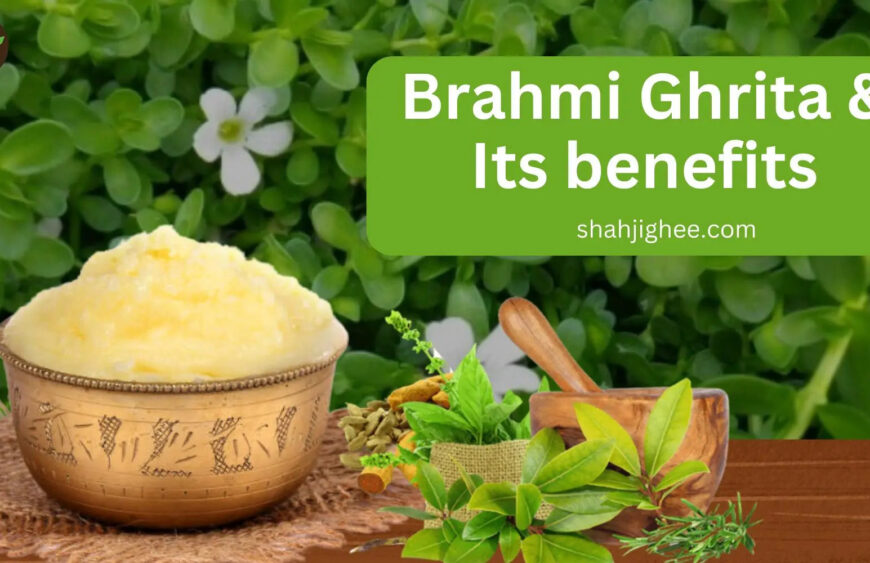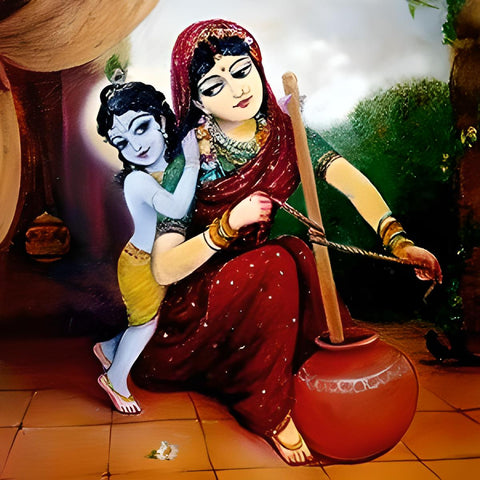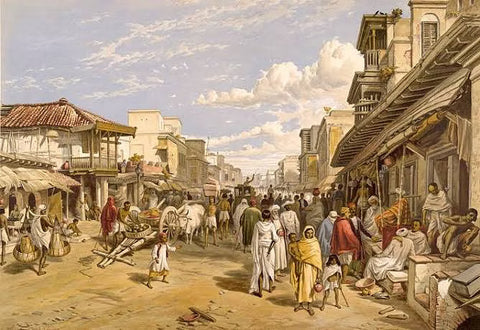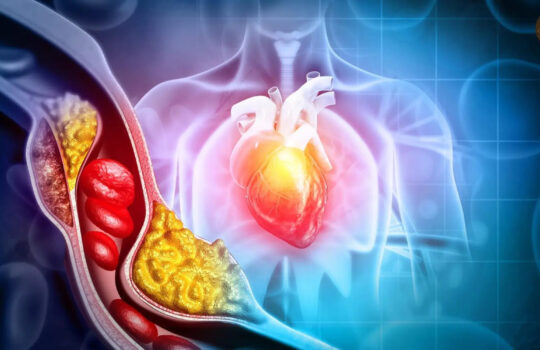Desi Ghee From Culture To Marketing Myths [5000 BC To 2023 Full Analysis]

Today, let\’s talk about health – something everyone desires. In this fast-paced world, there\’s one thing we often overlook – our well-being.
Today, we will discuss a superfood that cares for our health like a mother. We\’re talking about clarified butter, also known as desi ghee. This is the same desi ghee that used to be a hallmark of every Indian household. Whether it\’s cooking a dish or preparing a dessert, they were incomplete without the essence of desi ghee.
During our childhood, our dadi (grandmother) and nani used to serve us parathas and rotis slathered with desi ghee, and back then, we didn\’t worry about our health as much as we do today, because desi ghee nourished us like a mother.
But today, the situation has changed entirely. What happened with desi ghee that we started viewing it with suspicion and doubt? What happened, our children started smelling from it?
Today in shahjighee, we will delve into the historical analysis of desi ghee and observe how the golden glow of desi ghee faded over time. So stay with us on this journey through history.
Desi Ghee In Indian Culture [5000 BC]

India lives in villages, and even today a large section of India lives in villages. Desi Ghee has a history of thousands of years in India.
In our Sanatan Dharma, the cow has got the status of a mother, who nourishes us all with her milk, like a mother does for her child. Desi ghee holds immense significance in our Vedic culture.
In our Vedic culture, desi ghee is considered sacred and pure. Due to its purity, it is used in rituals such as havans and various religious ceremonies. It is also valued for its health benefits and purity.
Not only that, but we also find references to desi ghee in the Rigveda, where it is portrayed as a symbol of purity, knowledge, and spiritual enlightenment.
However, despite the profound importance of desi ghee, it gradually started disappearing from our culture. Let\’s make an effort to understand why this happened and delve into this matter.
Also Read:
Moving To The Cities [1700 – 1900s]

It is said that time is very powerful, it doesn\’t wait for anyone, and it changes everything. With the passage of time, the world also began to change.
People\’s needs started changing. Changes in people\’s needs began to occur when the British arrived in India in the early 17th century. Upon their arrival, the British initiated industrialization here to facilitate their trade.
During the British era, large-scale factories were established here. As these factories were set up, numerous people started getting employment opportunities.
Due to this, the people who used to live in the villages also started coming to the cities to earn their daily bread and within no time the population of the cities started touching the sky. Crowds started increasing in the cities.
This led to a division – The animals stayed in the village and the people went to the cities.
Ghee, lassi, curd made from indigenous cow\’s milk are now limited to villages only. And those who had gone to the cities, now they are away from the reach of these desi ghee.
And even today the situation is exactly the same, the cows and buffaloes have remained in the villages and we have come to the cities. Now we do not have access to that pure desi ghee which used to be there earlier.
This industrialization completely transformed Indians and their culture.
A divide was created – on one side, there are villages, and on the other, cities; on one side, there are desi cows, and on the other, people who have been left out of the reach of these dairy products, who cannot afford them.
They were seeking an alternative. In the market for dairy products, there was a significant void, and its fulfillment gave birth to a new market.
Dalda: The Rise & Fall [1930s]

The Rise of Dalda
When foreign companies saw that there was a huge demand for dairy products, especially alternatives to desi ghee, in the Indian market, in the year 1930, a Dutch company launched its \’Vanaspati Ghee\’ brand \’Dada\’ in India.
It was a \’hydrogenated vegetable oil\’. Hydrogenated vegetable oil is an oil that is made through the hydrogenation process. In this process, adding hydrogen to vegetable oil converts it into solid trans fat.
Dalda was launched as a cheaper alternative to desi ghee. Dalda\’s manufacturing company had made Dalda in such a way that it looks like desi ghee.
Its aroma, taste, touch should be exactly like desi ghee. But it was not desi ghee, it just looked like desi ghee. That\’s why people thought that if we are getting cheap desi ghee, then what is wrong with it.
And in no time Dalda became famous among the people, people started buying it in large quantities, Dalda was found in every house.
Also Read:
The White Revolution [1970s]

But only vanaspati ghee could not fulfill the demands of the people. Because only ghee is not a part of food for a person, people also need milk and curd.
Due to this increasing population, there was a huge demand for milk, curd, ghee, lassi. Therefore, first of all it is necessary that the supply of milk should be met.
But milk was being produced in very limited quantity in India. To meet the shortage of milk in the country, a program known as Operation Flood was launched on 13 January 1970.
Under this operation, foreign cows were imported in large quantities from abroad, which used to give 25-30 liters of milk a day.
It was the world\’s largest dairy development program, which made India, which was struggling with milk shortage, the world\’s largest milk producing country, leaving America behind.
Misconception Arose About Desi Ghee
Due to Dalda and the White Revolution, two misconceptions arose among people.
The first was that Dalda was equivalent to desi ghee, although it was not real desi ghee; it just appeared similar to desi ghee.
Dalda was manufactured by companies in such a way that it resembled desi ghee in terms of aroma, taste, and texture. People began purchasing Dalda thinking it was desi ghee, but over time, Dalda gave rise to various health issues.
The second misconception was that ghee made from milk from foreign cows was considered desi ghee. However, when the milk from foreign cows was tested, it was found to contain A1 protein, which was harmful to our health. On the other hand, our native cows\’ milk did not have this protein; instead, it contained A2 protein, which was beneficial for our health.
Seeing both the misconceptions, a new alternative came in the market which was cheaper than dalda and foreign ghee and that was refined oil.
Refined Oil: The Dalda / Vegetable Ghee Alternative [2000s]
By the end of the 90s, Dalda\’s business started shrinking and Dalda was also embroiled in several controversies.
People started losing faith in Dalda, people started falling ill from Dalda.
With the beginning of the 21st century, when people started falling ill due to dalda, many companies introduced \’refined oil\’ as an alternative to \’vanaspati ghee\’.
During this time, refined oils of groundnut, sunflower, sesame, soybean etc. came in the market, which were cheaper than \’Dalda\’ at that time.
Observing the rise of heart diseases, people significantly reduced their consumption of both \’Dalda\’ and desi ghee because Dalda appeared similar to desi ghee. This led to doubts about the authenticity of desi ghee as well.
Afterward, gradually, \’refined oils\’ took the place of both \’Dalda\’ and desi ghee.
Refined oil Disadvantages
However, \’refined oil\’ is also considered highly harmful to health.
This is because refined oil reduces the levels of good cholesterol in the body, increases resistance to insulin, and contains monounsaturated and polyunsaturated fats that give rise to trans fats when heated. It contributes to diseases related to cancer, diabetes, and the immune system.
But in the past few years, people have become more aware, and they have significantly reduced their consumption of refined oil as well.
Now, Awareness Of Desi Ghee
We should thank the internet and social media for this awareness. With the advent of the Internet, the gap between the villages and the cities began to fill.
Through the internet, we now have access to information about any product and its ingredients. We have also begun to understand how certain ingredients can impact our health.
Back when the internet wasn\’t available, the advertisements shown by companies were often taken at face value.
We did not do much research, because at that time we did not have smartphones like today. There was no internet. But today there is internet and everyone has a smartphone too.
People are now realizing that Dalda, ghee made from foreign cow\’s milk, and these refined oils are harmful to our health.
Now people are slowly realizing that desi ghee, which is made from the pure milk of our country\’s cows, was never bad at all.
Technical Analysis Of Vegetable Ghee, Refined Oil
Why our desi ghee wasn\’t harmful – you should also have a bit of the underlying chemistry behind it. Dalda or vanaspati ghee is a hydrogenated vegetable ghee.
This means that unsaturated vegetable fats are subjected to high temperatures with the addition of hydrogen to create it. Adding hydrogen converts it into trans-unsaturated fats.
On the other hand, refined oil contains a significant amount of MUFA (monounsaturated fats) and PUFA (polyunsaturated fats), which convert into trans-unsaturated fats when heated.
Trans fats are highly detrimental to heart health. If you use these oils for deep frying, you need to be cautious, as their trans fats can have a negative impact on your heart, especially.
To summarize this comprehensive analysis and understand why desi ghee disappeared from households, the first reason was industrialization. This led people to shift to the cheaper alternative of Dalda.
The second reason was the advent of the White Revolution, which flooded the market with ghee made from milk of foreign cows.
The third reason was the introduction of inexpensive refined oils resulting from these two factors. All three factors combined contributed to removing desi ghee from our homes.
* Important Article *
- Benefits of Eating Ghee With Milk
- Health Benefits of Eating Ghee
- Buffalo Ghee Vs Cow Ghee
- Best Ghee To Buy in India
Conclusion
However, now is the era of the internet, where people are becoming more informed. They are recognizing the importance of desi ghee and Shahji Ghee is also making people aware about Desi Ghee since 1957, and will continue to do so in the future.
 A2 Sahiwal Cow Ghee
|
 A2 Gir Cow Ghee
|








